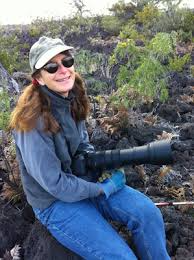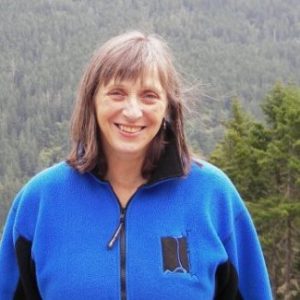
Megan Anderson is an earthquake geophysicist at the Washington Geological Survey. Megan spent her early years in Kent, WA during which the eruption of Mt. St. Helens probably spurred her fascination with geology, which was her major at Carleton College in Minnesota. She studied subduction processes and earthquakes in South America for her Ph.D. at the University of Arizona. She has studied numerous tectonic regions of the world but has always made her way back to the Pacific Northwest because there is so much left to discover. She taught for 10 years at Colorado College, dragging her students and equipment across the country to do research here every summer, but now (as of June) has made her home at the WGS in Olympia.
Her talk in Nov. 2018 was entitled “Revelations about active faulting in the Puget Sound region from geology and geophysics.” (Updated Oct. 2021)


